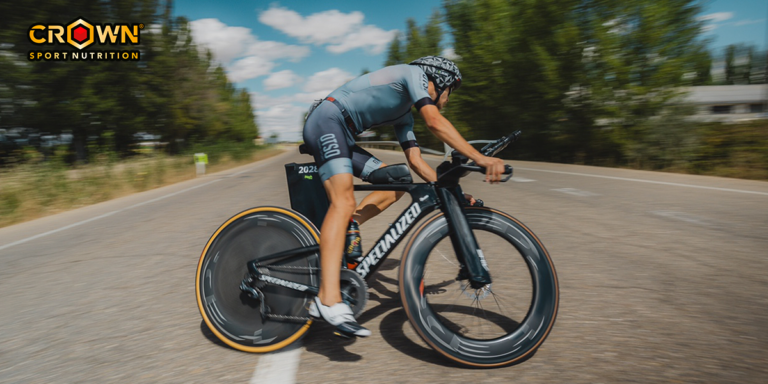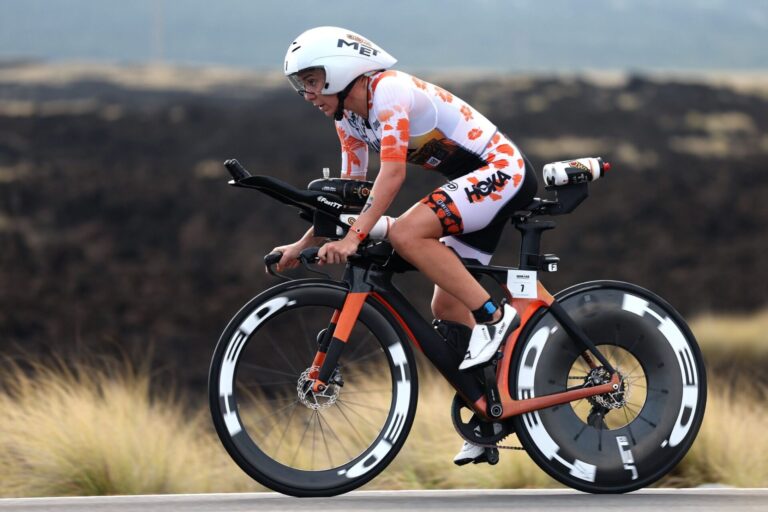[:es]Es importante considerar y esclarecer que no todo vale en el mundo de la nutrición deportiva. En un mercado creciente de suplementos y códigos de descuento, en ocasiones priman los intereses sobre la verdad y la evidencia científica. Encontrándonos un extraño panorama donde la mayoría de los productos comerciales no tienen la necesidad de demostrar su eficacia y no hacen aquello que dicen y prometen hacer.
Sin embargo, la Cr monohidrato es uno de los pocos suplementos donde la evidencia es sólida, tanto en su efectividad como su seguridad y legalidad, conociendo casi todos nosotros sus funciones a nivel de producción energética y consecuente mejora del rendimiento por múltiples causas (Figura 1).
Figura 1. Mecanismo de acción de la creatina y principales adaptaciones en el entrenamiento de fuerza.
Sabemos actualmente que la creatina es una de las ayudas nutricionales ergogénicas más populares para los atletas (o debería serlo). Los estudios han demostrado constantemente que la suplementación con monohidrato de creatina aumenta las concentraciones de creatina intramuscular, lo que puede ayudar a explicar las mejoras observadas en ejercicios de alta intensidad conduciendo a mayores adaptaciones al entrenamiento (Figura 1).
Por todo ello es bien conocida la creatina por sus funciones en el ámbito deportivo, pero sin duda alguna, algo menos, en el ámbito clínico y sobre todo su importante rol a nivel cerebral y cognitivo del que hablaremos en esta entrada (entre otras cosas).
Tanto la Cr endógena como dietaria es transportada a través de la circulación sanguínea a otros órganos (es decir, músculo esquelético, corazón y cerebro). La mayoría de Cr en el cuerpo es absorbida y utilizada por el músculo esquelético, siendo solo una pequeña porción absorbida por el cerebro.
La captación de Cr en el cerebro es mucho más lenta en comparación con el músculo esquelético, lo que sugiere que la barrera hematoencefálica dificulte este transporte por lo que podría ser efectivo que los protocolos para aumentar la creatina cerebral puedan requerir dosis mayores y / o más largas del protocolo convencional (0,07g/kg).
Una vez en el cerebro, este la utiliza de la misma forma que el corazón y el músculo para producir ATP. La suplementación oral de Cr aumenta la concentración fisiológica a nivel cerebral, lo que lleva a un aumento de los niveles de PCr.
Las deficiencias en la cognición se han relacionado con disminuciones inherentes de Cr en el cerebro, pero se ha demostrado que los aumentos en la suplementación oral de Cr reponen con éxito los niveles de Cr en el cerebro para teóricamente revertir estos déficits en la cognición (Figura 2).
Figura 2. Efecto terapéutico de la creatina a nivel cerebral
El aumento de la suplementación oral de Cr da como resultado una mejor función cerebral, memoria de trabajo, memoria de reconocimiento y reducción de la fatiga mental. Se supone que este efecto positivo y otras propiedades cognitivas se debe a que el cerebro tiene mayor disponibilidad de Cr.
Aunque según las última evidencias parece ser que la mayoría de estos efectos en cuanto a suplementación, sea de mayor relevancia en condiciones de estrés agudo (fatiga mental, deprivación del sueño, ejercicio exhaustivo) o crónico (envejecimiento, depresión, trastorno de estrés postraumático) incluso puede ejercer un efecto neuroprotector en población deportista con mayor riesgo de traumatismo craneoencefálico (deportes de contacto, colectivos…) mientras que se observa un efecto nulo o mínimo en individuos sanos sin estas condiciones mencionadas de estrés.
Otro de los estudios más recientes a la vez de interesantes, es el uso de monohidrato de creatina en la prevención de la sarcopenia, disminución de densidad mineral ósea e inflamación en ancianos.
Nos encontramos que la sarcopenia (contemplada como enfermedad según la OMS) es una afección muscular relacionada con el paso de la edad (8-13% Adultos > 60 años), caracterizada por una reducción en la cantidad muscular, fuerza muscular (dinapenia) y el rendimiento físico (es decir, tareas de funcionalidad) asociada a su vez con una mayor mortalidad y múltiples comorbilidades como fragilidad, aumento del riesgo de caída y fracturas, discapacidad, caquexia etc…
Siendo de carácter multifactorial, la sarcopenia puede ser causada por cambios en la morfología muscular, cinética de las proteínas musculares, función neuromuscular, inflamación, actividad física y nutrición.
La principal atención se ha centrado en las intervenciones nutricionales como un posible enfoque terapéutico para contrarrestarla. Encontrándose que cuando se consume creatina aplicando y sin aplicar entrenamiento de fuerza (aunque el balance calórico, cantidad de proteína y entrenamiento de fuerza sea mucho más prioritario y relevante), se ha visto como existe un aumento de masa muscular y su funcionalidad en población anciana.
Posiblemente influyendo en el metabolismo del ATP y aumentando la tasa de absorción de calcio en el retículo sarcoplasmatico, lo que reduciría el tiempo de relajación muscular y aumentando el desarrollo de la fuerza, mejorando la cinética de las proteínas musculares y factores como la inflamación.
En este último punto como es la inflamación, Se propone que, durante el proceso biológico del envejecimiento, existe un daño inherente a nivel mitocondrial que se suma a una inflamación elevada y sostenida de bajo grado, causando efectos deletéreos en la cadena transportadora de electrones, así como un efecto negativo como en el tejido muscular y hueso, lo que conduciría a la sobreproducción de especies reactivas de oxígeno. Estas ROS pueden causar mutaciones en el ADN mitocondrial, dañando y alterando las membranas celulares, provocando inflamación, daño muscular junto a una degradación de proteínas musculares.
La suplementación con creatina gracias a su rol como antioxidante puede ser efectiva para mitigar este daño a nivel mitocondrial, lo que conlleva a reducir el estrés oxidativo, apoptosis celular e inflamación de bajo grado.
Sin embargo, la variabilidad en la capacidad de respuesta a la suplementación con creatina es bastante alta en adultos de avanzada edad y factores como la concentración inicial de PCr intramuscular, contenido y tamaño de la fibra muscular tipo II (que sabemos que disminuye con la edad) junto con la ingesta dietética habitual de creatina pueden explicar los hallazgos inconsistentes en los estudios individuales (ya que normalmente en población anciana sabemos que la ingesta de proteína dietaria es algo menor).
Por último, otros de los estudios más recientes se centran en la suplementación con creatina para mejorar la densidad mineral ósea, pero esto solo es confirmado o apoyado en algunos ensayos, explicándose gracias a cierta activación celular involucrada tanto en la formación como en la resorción ósea. Por tanto, la creatina también podría tener la función potencial de disminuir el riesgo de caídas que experimentan la población anciana, lo que posteriormente reduciría el riesgo de fractura.
Aun así, aunque falte suficiente evidencia para confirmar estos últimos hallazgos, por todo esto comentado anteriormente y conociendo de antemano su seguridad en cuanto consumo crónico en todo tipo de poblaciones sanas (renal y hepático) y sus otros múltiples mecanismos de acción no mencionados (Figura 3). Los adultos de avanzada edad se consideran una de las poblaciones diana donde cobraría mayor sentido el uso de esta ayuda ergonutricional.
Figura 3. Otras potenciales funciones de la creatina
BIBLIOGRAFÍA
- Souza A De, Pertille A, Gabriela C, Barbosa R, Aparecida J, Silva DO, et al. Effects of Creatine Supplementation on Renal Function : A Systematic Review. 2019;1–10.
- Candow DG, Forbes SC, Vogt E. E ff ect of pre-exercise and post-exercise creatine supplementation on bone mineral content and density in healthy aging adults. Exp Gerontol. 2019;119(December 2018):89–92.
- Candow, D. G., Forbes, S. C., Chilibeck, P. D., Cornish, S. M., Antonio, J., & Kreider, R. B. (2019). Effectiveness of creatine supplementation on aging muscle and bone: focus on falls prevention and inflammation. Journal of clinical medicine, 8(4), 488.
- Candow DG, Forbes SC, Chilibeck PD, Cornish SM, Antonio J, Kreider RB, et al. Variables Influencing the Effectiveness of Creatine Supplementation as a Therapeutic Intervention for Sarcopenia. 2019;6(August):1–12.
- Oliver JM, Anzalone AJ, Turner SM. Protection Before Impact: the Potential Neuroprotective Role of Nutritional Supplementation in Sports-Related Head Trauma. Sport Med. 2018;48:39–52.
- Riesberg LA, Weed SA, McDonald TL, Eckerson JM, Drescher KM. Beyond muscles: The untapped potential of creatine. Int Immunopharmacol. 2016;37:31–42.
- Kraemer WJ, Beeler MK, Post EM, Luk H-Y, Lombard JR, Dunn-Lewis C, et al. Physiological Basis for Creatine Supplementation in Skeletal Muscle and the Central Nervous System. Second Edi. Nutrition and Enhanced Sports Performance. Elsevier Inc.; 2018. 581–594 p.
- Avgerinos KI, Spyrou N, Bougioukas KI, Kapogiannis D. Effects of creatine supplementation on cognitive function of healthy individuals: A systematic review of randomized controlled trials. Exp Gerontol. 2018;108(April):166–73.
AUTOR
Marcos Rueda Córdoba
- Graduado en Nutrición humana y Dietética (UGR) y Máster Oficial en nutrición en la actividad física y deporte (UCAM). Antropometrista ISAK I, Creador de contenido y cursos especializados en nutrición deportiva a través de plataformas online y presencial. Docente en Grupo San Valero (Universidad San Jorge, Zaragoza)
- Consulta de Nutrición presencial en Granada y online
[:en]It is important to consider and clarify that not everything goes in the world of sports nutrition. In a growing market for supplements and discount codes, interests over truth and scientific evidence sometimes prevail. Finding us a strange picture where most commercial products do not need to prove their effectiveness and do not do what they say and promise to do.
However, Cr monohydrate is one of the few supplements where the evidence is solid, both in its effectiveness and its safety and legality, knowing almost all of us its functions at the level of energy production and consequent improvement of performance for multiple causes (Figure 1).
We currently know that creatine is one of the most popular ergogenic nutritional aids for athletes (or should be). Studies have consistently shown that creatine monohydrate supplementation increases intramuscular creatine concentrations, which may help explain the improvements seen in high intensity exercises leading to greater training adaptations (Figure 1).
For all this, creatine is well known for its functions in the sports field, but without a doubt, somewhat less, in the clinical field and especially its important role at the brain and cognitive level that we will talk about in this post (among other things).
Both endogenous and dietary Cr are transported through the bloodstream to other organs (i.e., skeletal muscle, heart and brain). The majority of Cr in the body is absorbed and used by the skeletal muscle, being only a small portion absorbed by the brain.
The uptake of Cr in the brain is much slower compared to skeletal muscle, suggesting that the blood-brain barrier hinders this transport so it could be effective that protocols to increase brain creatine may require larger doses and / or more lengths of the conventional protocol (0.07g / kg).
Once in the brain, it uses it in the same way as the heart and muscle to produce ATP. Oral supplementation of Cr increases the physiological concentration at the brain level, which leads to an increase in PCr levels.
Cognitive deficiencies have been linked to inherent decreases in Cr in the brain, but it has been shown that increases in oral Cr supplementation successfully replenish Cr levels in the brain to theoretically reverse these deficits in cognition (Figure 2).
The increase in oral Cr supplementation results in better brain function, working memory, recognition memory and reduction of mental fatigue. This positive effect and other cognitive properties are supposed to be due to the greater availability of Cr in the brain.
Although according to the latest evidence, it seems that most of these effects in terms of supplementation, are of greater relevance in conditions of acute stress (mental fatigue, sleep deprivation, exhaustive exercise) or chronic (aging, depression, post-traumatic stress disorder) It can even exert a neuroprotective effect in an athlete population with a higher risk of head trauma (contact sports, collectives …) while a zero or minimal effect is observed in healthy individuals without these mentioned stress conditions.
Another of the most recent studies at the same time interesting, is the use of creatine monohydrate in the prevention of sarcopenia, decreased bone mineral density and inflammation in the elderly.
We found that sarcopenia (considered as a disease according to the WHO) is a muscular condition related to the passage of age (8-13% Adults> 60 years), characterized by a reduction in muscle quantity, muscular strength (dynapenia) and physical performance (that is, tasks of functionality) associated in turn with increased mortality and multiple comorbidities such as fragility, increased risk of falling and fractures, disability, cachexia etc …
Being multifactorial, sarcopenia can be caused by changes in muscle morphology, muscle protein kinetics, neuromuscular function, inflammation, physical activity and nutrition.
The main focus has been on nutritional interventions as a possible therapeutic approach to counteract it. Finding that when creatine is consumed by applying and without applying (to a lesser extent) strength training, it has been seen that there is an increase in muscle mass and its functionality in the elderly population.
Possibly influencing the metabolism of ATP and increasing the rate of calcium absorption in the sarcoplasmic reticulum, which would reduce the time of muscle relaxation and increase the development of strength, improving the kinetics of muscle proteins and factors such as inflammation.
At this last point, such as inflammation, it is proposed that, during the biological process of aging, there is an inherent damage at the mitochondrial level that adds to a high and sustained inflammation of low grade, causing defects in the electron transport chain, as well. as a negative effect on muscle and bone aging, which would lead to the overproduction of reactive oxygen species. These ROS can cause mutations in mitochondrial DNA, also damaging and altering cell membranes, causing inflammation, muscle damage and degradation of muscle proteins.
Creatine supplementation thanks to its role as an antioxidant can be effective in mitigating this damage at the mitochondrial level, which leads to reducing oxidative stress, cell apoptosis and low-grade inflammation.
However, the variability in the ability to respond to creatine supplementation is quite high in older adults and factors such as the initial concentration of intramuscular PCr, content and size of type II muscle fiber (which we know decreases with age ) together with the usual dietary intake of creatine can explain inconsistent findings in individual studies (since normally in the elderly population we know that dietary protein intake is somewhat lower).
Finally, other recent studies focus on creatine supplementation to improve bone mineral density, but this is only confirmed or supported in some trials, explaining thanks to a certain cellular activation involved in both bone formation and resorption. . Therefore, creatine could also have the potential function of reducing the risk of falls experienced by the elderly population, which would subsequently reduce the risk of fracture.
Even so, although there is a lack of evidence to confirm these latest findings, for all this, discussed above and knowing in advance its safety as chronic consumption in all types of healthy populations (renal and hepatic) and its other multiple mechanisms of action not mentioned (Figure 3). Older adults are considered one of the target populations where the use of this ergogenic aid would make more sense.
BIBLIOGRAFÍA
- Souza A De, Pertille A, Gabriela C, Barbosa R, Aparecida J, Silva DO, et al. Effects of Creatine Supplementation on Renal Function : A Systematic Review. 2019;1–10.
- Candow DG, Forbes SC, Vogt E. E ff ect of pre-exercise and post-exercise creatine supplementation on bone mineral content and density in healthy aging adults. Exp Gerontol. 2019;119(December 2018):89–92.
- Candow, D. G., Forbes, S. C., Chilibeck, P. D., Cornish, S. M., Antonio, J., & Kreider, R. B. (2019). Effectiveness of creatine supplementation on aging muscle and bone: focus on falls prevention and inflammation. Journal of clinical medicine, 8(4), 488.
- Candow DG, Forbes SC, Chilibeck PD, Cornish SM, Antonio J, Kreider RB, et al. Variables Influencing the Effectiveness of Creatine Supplementation as a Therapeutic Intervention for Sarcopenia. 2019;6(August):1–12.
- Oliver JM, Anzalone AJ, Turner SM. Protection Before Impact: the Potential Neuroprotective Role of Nutritional Supplementation in Sports-Related Head Trauma. Sport Med. 2018;48:39–52.
- Riesberg LA, Weed SA, McDonald TL, Eckerson JM, Drescher KM. Beyond muscles: The untapped potential of creatine. Int Immunopharmacol. 2016;37:31–42.
- Kraemer WJ, Beeler MK, Post EM, Luk H-Y, Lombard JR, Dunn-Lewis C, et al. Physiological Basis for Creatine Supplementation in Skeletal Muscle and the Central Nervous System. Second Edi. Nutrition and Enhanced Sports Performance. Elsevier Inc.; 2018. 581–594 p.
- Avgerinos KI, Spyrou N, Bougioukas KI, Kapogiannis D. Effects of creatine supplementation on cognitive function of healthy individuals: A systematic review of randomized controlled trials. Exp Gerontol. 2018;108(April):166–73.
[:]











